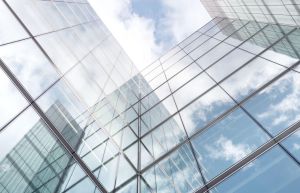Posted by
Share this article
Cloud computing over the years has transformed business operations by offering flexibility, scalability, and efficiency. As many organisations start their journey into the world of cloud adoption, they often find themselves at a crossroads, faced with critical decisions and challenges that can define the course of their transformative digital journey. Through this article, Thales Cyber Services ANZ explores the challenges that arise at this critical point and provides insight for organisations to assist in navigating through the complexities of their cloud enablement strategy.
Align with Business Goals: First thing first, before embarking on any cloud initiatives, it's essential to align your strategy with your organisation's primary business goals. Engaging with the key stakeholders and sponsors to assess how cloud adoption, including leveraging Azure cloud services, will enhance your business productivity, agility, time to market, improve customer experience, and streamline operations is an important first step. This alignment ensures that your cloud adoption strategy is driven by outcomes and not just a technology-driven transformation. Developing a strong business case will go a long way.
Evaluate Workload for Cloud Suitability: Not all workloads are fit for transformation when it comes to the cloud services. It is highly recommended organisations conduct a thorough feasibility assessment to determine which applications and data are best suited for migration. Key factors like security requirements, data sovereignty, and performance requirements should be considered while making decisions. A hybrid approach can often be the most effective and efficient solution.
Pick a Cloud Model: Cloud platform offers a variety of deployment models when considering transformation for applications. Consider deployment models including public, private or hybrid cloud, based on the application requirements. Each cloud model offers strengths and limitations. Choosing one over the other often depends on the cost, data security, compliance, and performance. The decision to whether simply migrate the application to the cloud which is often referred to as lift-and-shift against the application modernisation using Cloud native technologies requires an understanding of each option with regards to the complexity of the deployment, migration challenges, cost, and skills within the organization to carry such activities.
Cloud Security: Security should be of the utmost importance and an integral part of the cloud adoption strategy. Cloud is a shared responsibility model as far as the “hyperscaler” (AWS, Azure, Google etc.) deployments are concerned. During an application disposition phase, engage early with key security SMEs to understand the implications of moving the applications to the cloud. Ensure data protection, access control and regulatory requirements are met.
FinOps: While cost may not be the primary motivator for cloud adoption in many organisations, it is very crucial to manage the costs effectively to keep control of expenses and budget. Most of the cloud providers have recommendations and tools available to monitor cloud usage using various mechanisms such as resource rightsizing, budgeting, monitoring of the usage, and most importantly governing the access to the cloud platform that allows the resource provisioning privileges. Furthermore, it's worth exploring third-party cloud management platforms that can integrate with various cloud providers, particularly useful in a multi-cloud environment to assist with cost management.
Scalability and Flexibility: Performance efficiency is one of the core pillars of a cloud well-architected framework. Among the numerous benefits cloud enablement presents, scalability and flexibility are the primary advantages. Design your cloud architecture to meet always-changing demand. The fundamental principal of cloud is in its elasticity and consumption-based model. In an end state, organisations want to be in proactive mode so the applications can easily respond by adjusting the resources according to the demand fluctuations. The scalability principal ensures that your architecture can grow without compromising performance.
Training and Upskilling: For a lot of organisations transformation to the cloud is a cultural shift from traditional IT and requires upskilling of their technical staff. Engage with the key stakeholders and technical resources early in the cloud adoption journey to gather the understanding of the skills and resources required to govern and manage the new environment.
Change Management: Most recently, most organisations have well-established change management processes aligning to the ITIL framework, the majority of which can be adapted for the ongoing governance and management of the cloud environment. However, naturally agile, and flexible cloud operations can present challenges and risks if not proper change control is followed. Without appropriate assessment, changes within the cloud can adversely affect the operation of the workload resulting in unplanned outages. Ensure appropriate approval workflows are established and the process is communicated to the technical staff.
Conclusion
As many organisations embark on their cloud enablement journey while trying to understand the realm of emerging AI, aligning with the key success criteria that we have mentioned in this article can be a very good starting point and will aid in the success of your digital transformation. Cloud adoption is a first step in the digitalisation journey that will help explore the endless possibilities of adapting automation using AI for improved productivity and business agility. As some organisations may not have an established IT department with the required Cloud SME’s, it may also be of value to partner with a Cloud MSP.
Want to learn more about how Thales Cyber Services ANZ can help you in your cloud adoption journey, Visit our website Thales Cyber Services ANZ Cloud Services or contact us to discuss further.
Contact us
Speak with a Thales Cyber Services ANZ
Security Specialist
Thales Cyber Services ANZ is a full-service cybersecurity and secure cloud services provider, partnering with clients from all industries and all levels of government. Let’s talk.





